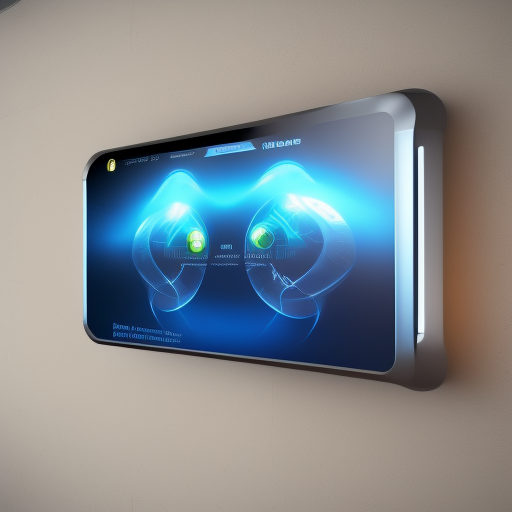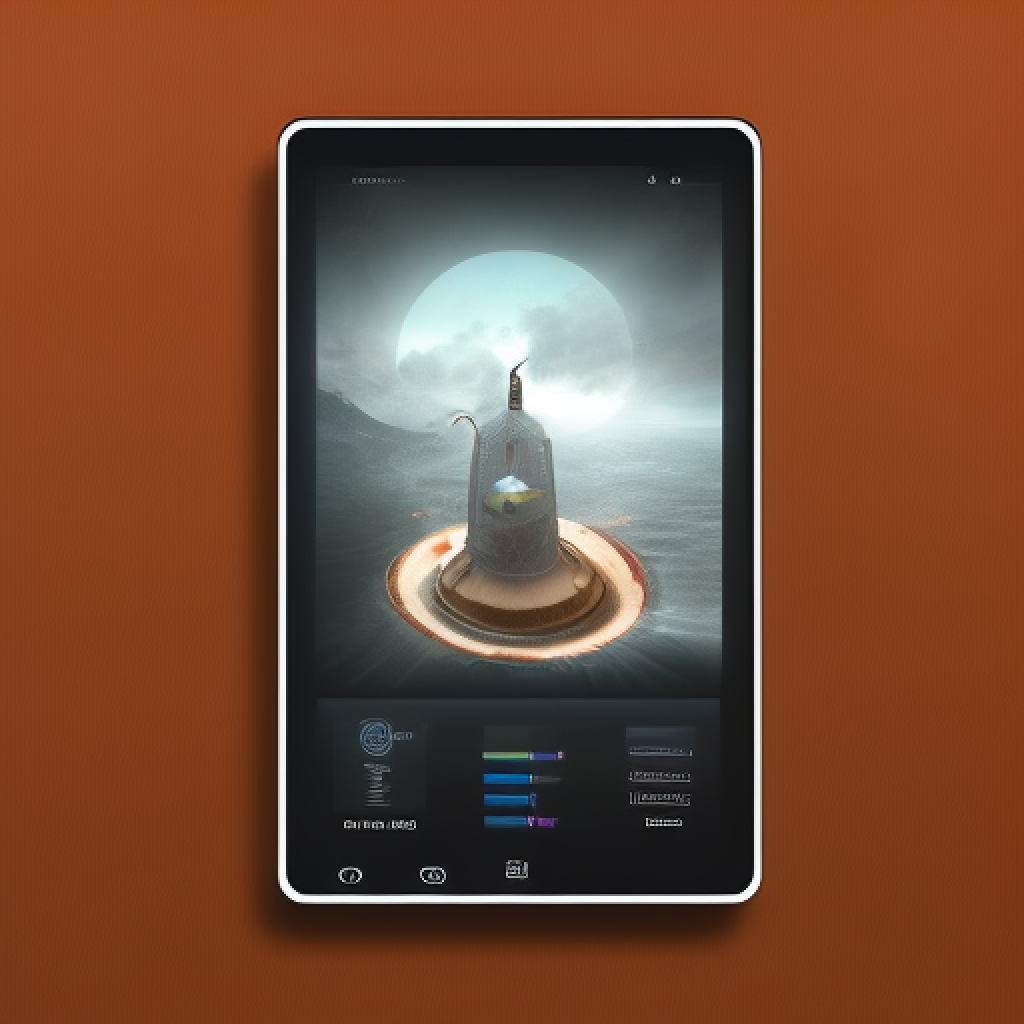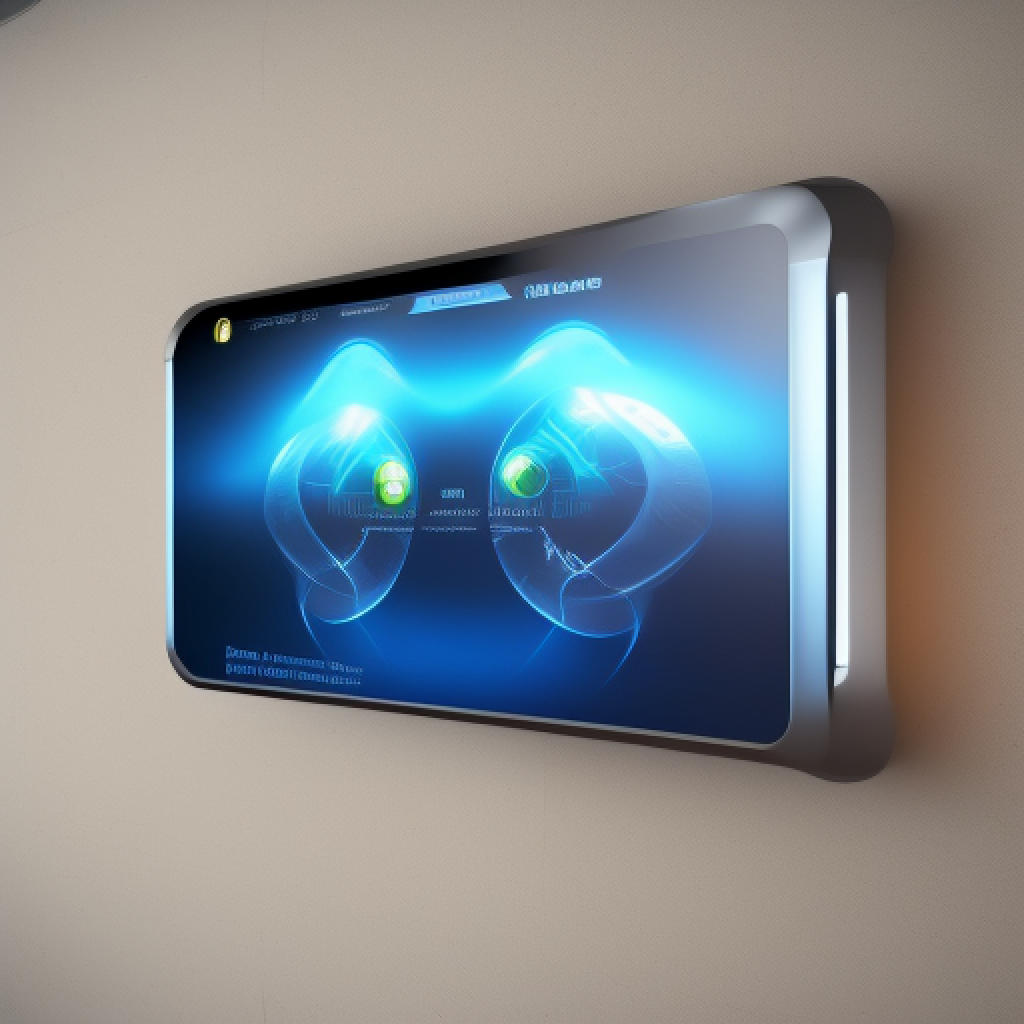The use of interactive touch panels in product design

Interactive touch panels are increasingly being used in product design to enhance the user experience and improve functionality. Here are some ways that interactive touch panels are being used in product design:


With the advent of technology, home appliances have become more interactive and user-friendly. The integration of interactive touch panels into home appliances such as refrigerators, washing machines, and ovens has made our daily lives easier and more convenient. These touch panels have revolutionized the way we interact with our home appliances. One of the significant advantages of these touch panels is that they make it easier for users to control and monitor their appliances. No longer do we have to fiddle with knobs or buttons to set the temperature or time. With these touch panels, we can easily adjust the settings according to our preferences. For example, we can adjust the temperature of our refrigerator or oven with just a few taps on the touch panel. Another great feature of these touch panels is that they allow us to access recipes while cooking. This is particularly helpful for those who love to cook and experiment with new recipes. Users can browse through different recipes and select the one they want to cook. The touch panel will display the recipe, and users can follow the instructions step by step. Moreover, these touch panels also provide alerts when maintenance is required. This helps users keep their appliances in good working condition, thus extending their lifespan. The touch panel may display a message indicating that it is time to clean the filter or replace a part. This is especially useful for those who lead busy lives and may forget to maintain their appliances regularly. In addition to these benefits, these touch panels come with a sleek and modern design that adds to the aesthetic appeal of our homes. They blend seamlessly with other appliances and give our homes a contemporary look. Furthermore, these touch panels are easy to clean and maintain, so they stay looking new for a long time. In conclusion, the integration of interactive touch panels into home appliances has revolutionized the way we interact with our appliances. They make our lives easier, more convenient, and help us to keep our appliances in good working condition. With their sleek and modern design, they add to the aesthetic appeal of our homes. It is no wonder that more and more people are opting for home appliances that come with touch panels.
The use of interactive touch panels in the automotive industry has revolutionized the way we interact with our cars. These touch panels are designed to provide the driver with a centralized hub that allows them to control various functions of the car with ease. Climate control, navigation, and entertainment systems can all be controlled through these interactive touch panels, making driving a much more enjoyable and convenient experience. One of the most significant advantages of using interactive touch panels in cars is the level of customization they offer. Drivers can easily personalize their dashboard to suit their preferences, which can include changing the background color, adjusting the size of icons, or even adding new functions to the dashboard. This level of customization not only makes driving more enjoyable but also helps drivers stay focused on the road by giving them quick access to the functions they use most frequently. Another benefit of having an interactive touch panel in cars is the reduction in clutter that comes with traditional buttons and switches. With a touch panel, there is no need for large buttons or switches that take up space on the dashboard. Instead, everything is integrated into one sleek and modern-looking touch panel that blends seamlessly into the car’s interior. Moreover, these touch panels are also designed to be intuitive and user-friendly, which means that anyone can use them without needing to read through complex user manuals. With just a few taps on the screen, drivers can easily navigate through the various functions of the car, making driving a much more effortless and enjoyable experience. In addition, interactive touch panels are also helping to enhance the safety of cars. By reducing the need for the driver to take their eyes off the road to search for switches or buttons, touch panels are helping to eliminate distractions and allowing drivers to focus on the road ahead. In conclusion, the use of interactive touch panels in the automotive industry has transformed the way we interact with our cars. From increased customization to improved safety, these touch panels are changing the game for car manufacturers and drivers alike. With continued advancements in technology, we can only expect even more innovative features to be integrated into touch panels in the years to come.
The use of interactive touch panels in the design of consumer electronics has revolutionized the way users interact with their devices. In today’s digital age, smartphones and tablets have become an indispensable part of our lives. These devices have become an extension of our personality, allowing us to stay connected with the world around us and access information at our fingertips. Interactive touch panels have become an integral part of these devices, providing users with a seamless and intuitive experience. These panels allow users to navigate through menus and apps with ease, making it easy for even the most tech-averse individuals to use these devices with confidence. With the touch of a finger, users can access their favorite apps, browse the internet, and perform other tasks effortlessly. One of the most significant advantages of interactive touch panels is their versatility. These panels can be integrated into a wide range of consumer electronics, including smartphones, tablets, laptops, and even smart TVs. This has resulted in a more significant shift towards touch-based interfaces, with many companies launching touch-based devices to cater to the growing demand for such products. Another advantage of interactive touch panels is their ability to provide users with a more immersive experience. With the advent of high-resolution displays, touch panels have become a crucial component in delivering stunning visuals and high-quality audio. The use of touch panels in devices such as gaming consoles has resulted in a more immersive gaming experience, allowing users to feel more connected to the game world. In conclusion, the use of interactive touch panels in the design of consumer electronics has transformed the way we interact with our devices. These panels have made it easy for users to navigate through menus and apps, providing a more intuitive and seamless experience. With their versatility and ability to deliver stunning visuals and audio, touch panels have become an integral part of modern-day consumer electronics.
Medical devices have come a long way in recent years, thanks to the integration of touch panel technology. Interactive touch panels have revolutionized the way medical devices are designed, particularly for blood glucose meters and insulin pumps, which are now easier to use and more convenient for patients. The use of touch panels in medical devices has made it possible for patients to monitor and manage their health conditions in a more efficient way. One of the biggest advantages of touch panel technology is its ease of use. With touch panels, patients have the ability to navigate through menus and options with a simple touch of their finger. This allows for a more intuitive and user-friendly experience, which is especially important for patients who may be elderly or have limited dexterity. Touch panels also make it possible for patients to keep track of their data more easily, as they can quickly input and view information about their health condition. Another benefit of touch panels in medical devices is their versatility. Touch panels can be customized to meet the specific needs of different patients and medical conditions. For example, a blood glucose meter with a touch panel could include larger buttons and fonts for a patient with impaired vision, or a simplified interface for a patient with cognitive impairments. This level of customization has greatly improved the functionality of medical devices and increased patient satisfaction. Beyond these benefits, touch panels have also paved the way for new innovations in medical device design. For example, some insulin pumps now incorporate touch panels that allow patients to adjust their insulin dosage with greater precision, reducing the risk of low or high blood sugar levels. Additionally, some medical devices are now incorporating touch panels that can connect to smartphones and other mobile devices, allowing patients to easily access and share their health data with healthcare providers and family members. In conclusion, interactive touch panels have greatly improved the design of medical devices and enhanced the lives of patients. The ease of use, versatility, and innovation provided by touch panels have made it possible for patients to better monitor and manage their health conditions with minimal disruption to their daily lives. As technology continues to evolve, touch panels are sure to remain a vital component of medical device design for years to come.
Overall, the use of interactive touch panels in product design is becoming increasingly popular due to their ability to enhance the user experience and improve the functionality of products. With advancements in technology, we can expect to see more innovative uses of interactive touch panels in product design in the future.







